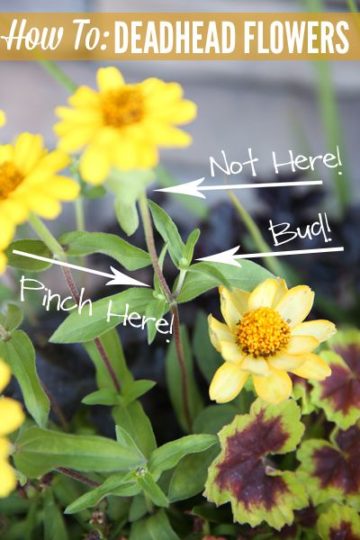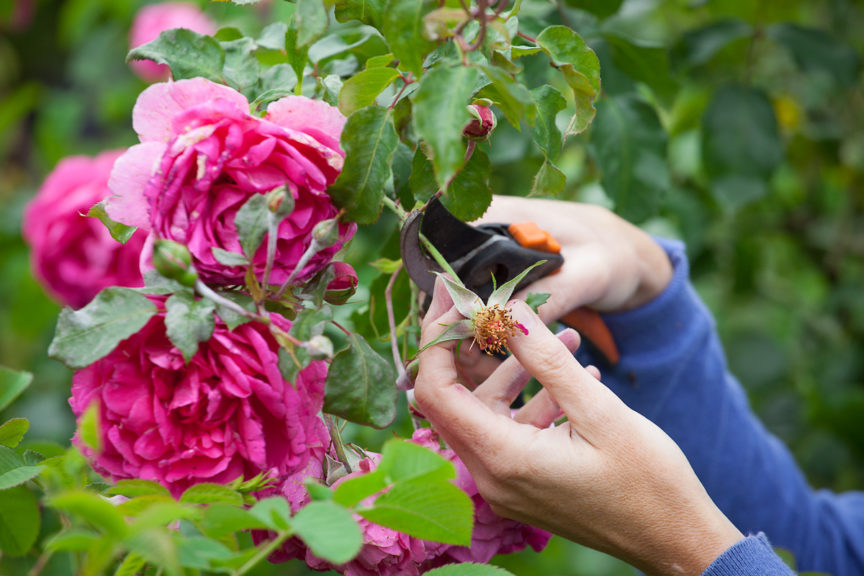First, what exactly is deadheading? This gardening term simply means to remove the old spent blooms including any developing seed from a plant to help keep it blooming longer. Why does a plant bloom more if you remove old flowers? Flowers are a means to ensure the continued survival of the plant and the next generation as well. In some cases, once seed has been produced, the plant will stop blooming since there is no reason to put energy into blooming any longer as the seed is there for the next generation. Removing old flowers before they produce seed will keep plants blooming longer. Deadheading is good for your plants and means more flowers for you to enjoy.
Deadheading can be a rather time consuming endeavor, but many times it is considered a labor of love. Deadheading can also make the plant look neater: dying flowers tend to turn brown and either dry or mushy. This can take away from the overall look you’ve worked so hard to achieve in your garden.
In more recent time, seed and plant modifications have changed a plant’s growing habit by not allowing it to go to seed, but only to flower. Plant breeders have put a lot of effort into choosing plants that will continue to bloom without deadheading. This makes it much easier on the gardener!
Choosing plants that don’t need deadheading would certainly be the easiest route to having continuous flowers. However, in some cases there will be a plant you can’t do without, even though deadheading is required, or perhaps the sight of old blooms still hanging on to plants will bother you enough that you want to remove them anyway. At these times knowing how to properly deadhead will be necessary.
In most cases, when deadheading you can simply remove the old flower by pinching off or cutting the stem just below the base of the flower and near the first set of leaves. This will remove the old flower and keep it from producing seed – which is one of the goals of deadheading. Please note that simply pulling off the dead flower petals without removing the developing seed pod does not increase flower production since seeds will still develop.
Any flower can be deadheaded below the flower head without affecting the rest of the plant. For plants with larger stems removing just the flower head may leave an ugly stem exposed. Cutting down the stem more will remove the unsightly stalk as well as the spent flower. Some flower stalks are thin and soft enough to simply ‘pinch off’ between your fingers. Pinching is quick and convenient, especially with plants such as coleus, where you want to avoid flowers and or seeds entirely because you are growing the plants for their colorful leaves.
For many gardeners, deadheading is a time consuming chore they simply don’t have the time to perform, so choosing self deadheading flowers is a good start to keeping a nice looking garden. However, there are gardeners that find deadheading to be a great excuse to spend time in the garden, a way to relax at the end of a busy day. If you are a gardener who enjoys deadheading, never fear. Even though some plants may no longer need deadheading to bloom continuously, doing so will not harm the plants. Feel free to remove as many spent flowers as you wish.
Removing dead blooms allows the plant to direct its energy toward improving its general health. Most perennial flowers bloom only once per year, even with deadheading. However, cutting back the flower stalks will allow all of the plant’s energy to be put back into its roots and stems, allowing it to regain any lost energy from flowering thus making it a hardier plant to survive the winter.
Read a bit more about deadheading from Proven Winners: https://www.provenwinners.com/learn/care/why-and-when-deadhead-your-flowers
Here is a partial List of plants that don’t need deadheading …
Ageratum Angelonia Argyranthemum Begonia
Bidens Calibrachoa Dahlia Diamond Frost
Coral Bells Impatiens Lantana Lobularia
Nemesia Phlox Portulaca Thunbergia
Scaevola Sedum Supertunia Torenia

